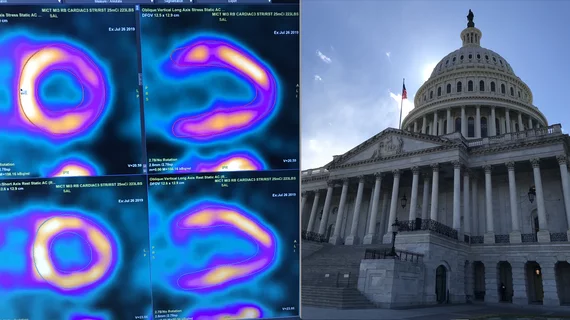ASNC asks Congress to officially repeal the AUC mandate for advanced medical imaging
Last fall, the Centers for Medicare and Medicaid Services (CMS) rescinded regulations and paused its calls requiring consultation of appropriate use criteria (AUC) in order for advanced imaging exams like CT, MRI and nuclear imaging to be paid for. While this was the outcome in the 2024 Medicare Physician Fee Schedule final rule, the AUC program is still on the books as part of the Protecting Access to Medicare Act (PAMA). It will take an act of Congress to officially remove the AUC provision from the law.
American Society of Nuclear Cardiology (ASNC) has been one of the biggest advocates to repeal the AUC requirement since PAMA was enacted in 2014. ASNC said it asked for the provision to be officially repealed in a letter to Congress sent in June.
Concern is also heightened with the U.S. Supreme Court in June overturning the 1984 Chevron deference doctrine, which significantly reduces the authority of federal agencies, like CMS, to interpret laws passed by Congress.
Following years of CMS rule-making toward implementation of the AUC program, CMS paused and said there were “inherent risks in terms of data integrity and accuracy, beneficiary access, and potential beneficiary liability for advanced diagnostic imaging services render the AUC program impracticable," adding that their "experience in recent years has demonstrated that the goals of appropriate, evidence based, coordinated care can be achieved more effectively, efficiently and comprehensively through other CMS quality initiatives.”
ASNC said it strongly supports the consultation of AUC, but has held the position, even prior to the enactment of PAMA, that the law is overly prescriptive, complex, and siloed from, rather than integrated with, the Quality Payment Program (QPP).
"Although Congress may have believed the AUC program was a straight-forward approach to encourage the consultation of AUC by clinicians, CMS’ decision to indefinitely pause the program and rescind its regulations only underscores the complexity of the law," ASNC President Lawrence Phillips, MD, director of the nuclear cardiology laboratory at NYU Langone, explained in a letter he sent to the Senate Committee on Finance in June.
He said maintaining the AUC program and imposing consultation requirements on physicians contributes to physician regulatory burden, adds healthcare costs and does not facilitate meaningful quality improvement that drives better patient outcomes.
"We respectfully ask the Finance Committee to work with ASNC and other medical societies to find ways to align consultation of AUC with the next generation of the QPP in a manner that does not add to clinician administrative burden and practice expense and creates provider flexibility for the consultation of physician-developed, evidence-based and transparent AUC or of advanced diagnostic imaging guidelines using a mechanism best suited for their practice, specialty and workflow," Phillips wrote.
He said a flaw is the vastness of the program requiring AUC consultation and claims documentation for every advanced diagnostic imaging test. ASNC recommends that efforts designed to encourage consultation of AUC should be focused on areas of low-value care.
The program also requires AUC consultation confined strictly to the use of a CMS-qualified clinical decision support mechanism (CDSM). Philips said other decision support tools and clinical guidelines embedded into EHR systems must also be recognized for use.
"Confining consultation to a qualified CDSM increases cost and takes away the ability of physicians to consult AUC developed by their specialty society," Philips said.
The ASNC letter gave a thorough outline of the legislation and the issues involved. Read the full letter.

